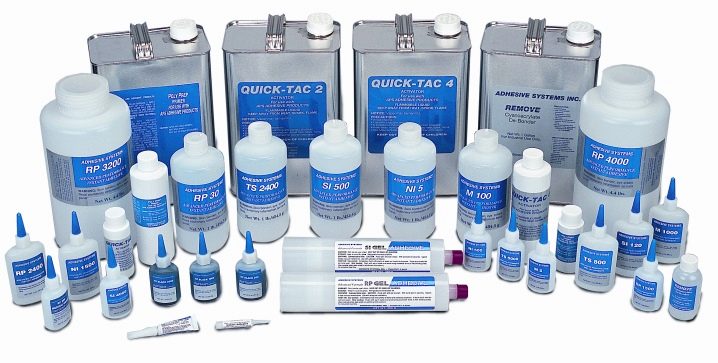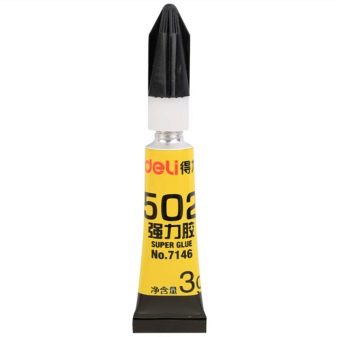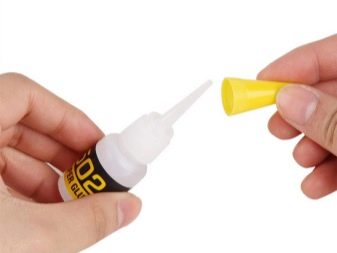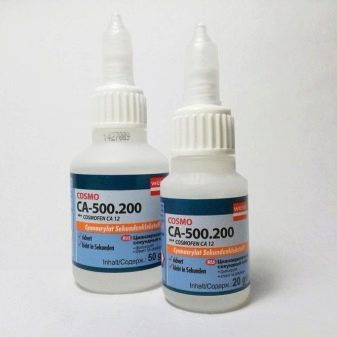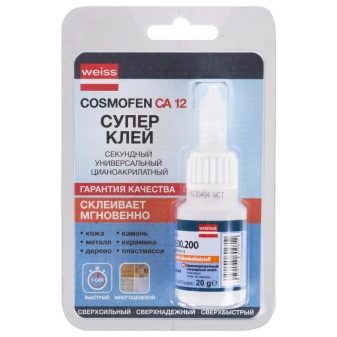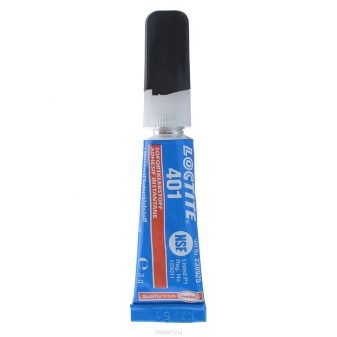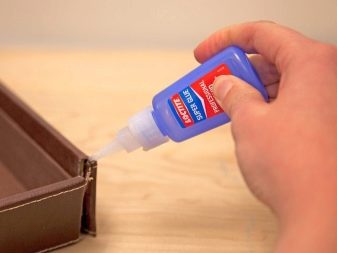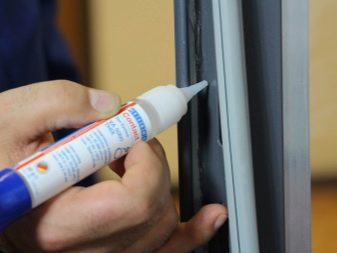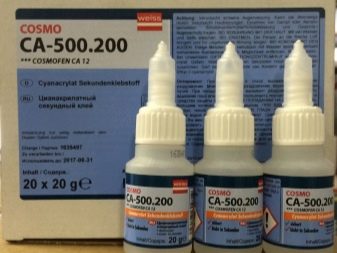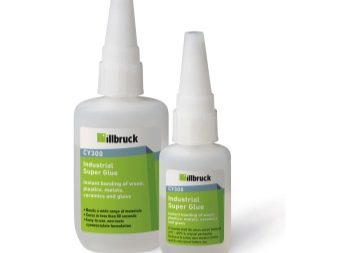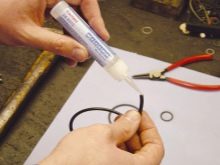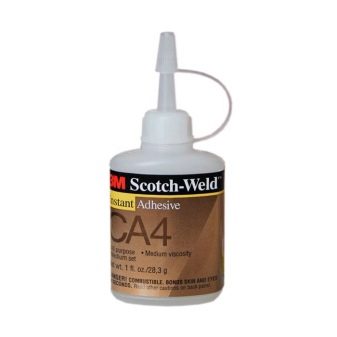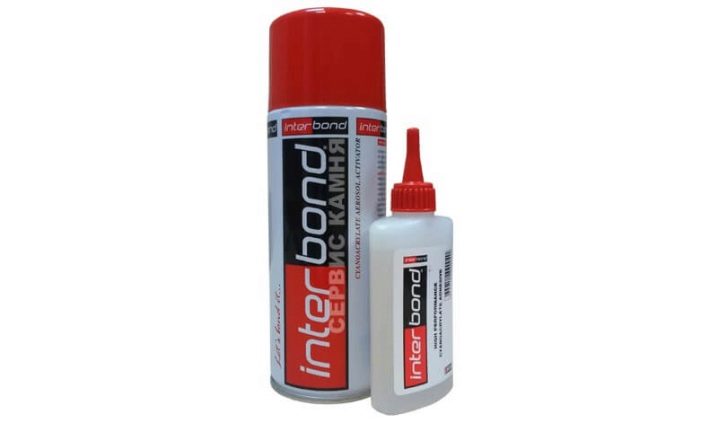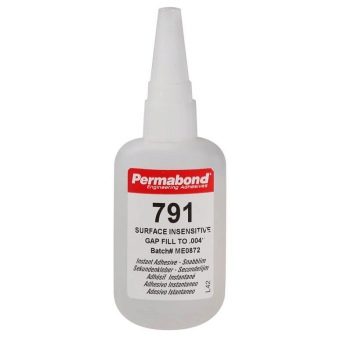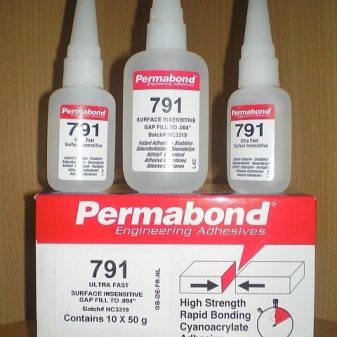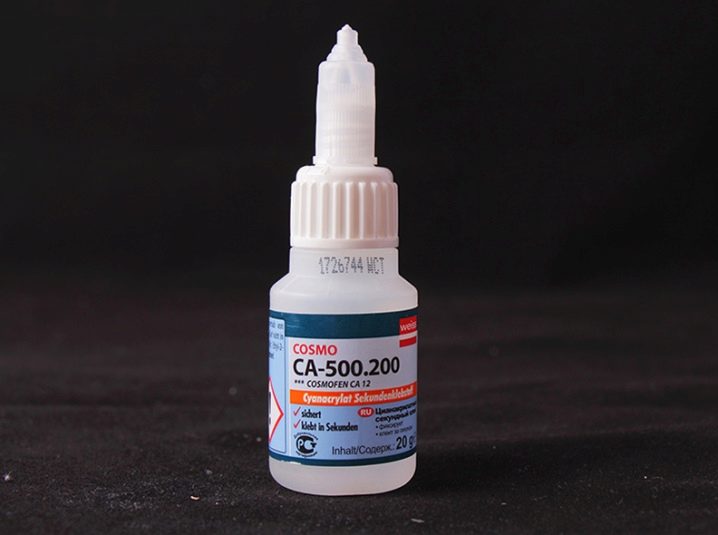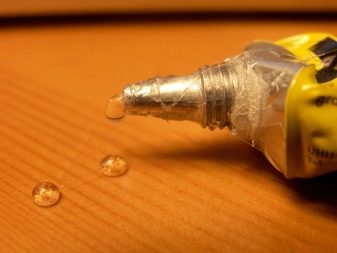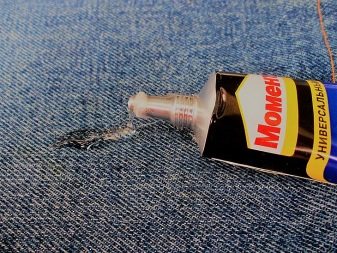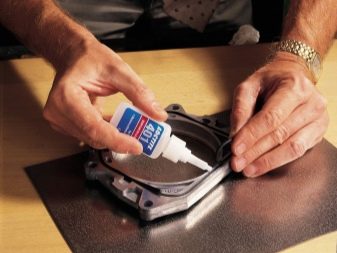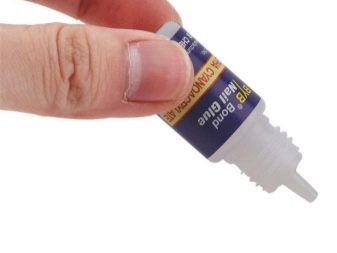Cyanoacrylate glue: types and characteristics
When installing or assembling various parts made of polymers or metal-plastic, there is a need to connect them with glue. The presence of additional holes will make the joint more vulnerable to fracture or other mechanical stress. One of the best options is cyanoacrylate glue.
Features of the composition
Any cyanoacrylate two-component adhesive consists of copolymers. They have a high level of adhesion to absolutely any surfaces. Each manufacturer has its own adhesive composition, the manufacturing features of which are kept secret. All adhesives hold surfaces together and are characterized by a long service life.
Each glue is based on cyanoacrylate and acids derived from it.which can make up to 99% of the entire content. For additional properties, plasticizers and thickeners are added.
This composition begins to seize only when exposed to weak alkali or ordinary water - this is one of the basic principles of working with cyanoacrylates. With a very thin layer, the process of setting can occur without moisture.
Properties and specifications
Today, the production of cyanoacrylate glue is carried out by many well-known companies. Their main property is high adhesion with a large number of surfaces: wood, glass, metal, plastic, rubber. It is also worth noting that such compounds are absolutely not affected by water, oils, gasoline or various alcohols.
Cyanoacrylate glue works well with gaps less than 0.1 mm. It can be used for bonding tightly adjacent surfaces. However, there are compositions with high viscosity that are suitable for working with gaps of about 0.25 mm, while their consumption per m² is about 300 g. If necessary, close a large gap, usually using Cosmofen or CA-4.
Technical characteristics of cyanoacrylate glue determine the scope of its use.
- Condition. It is a thick mass with a high degree of viscosity. Many options are transparent.
- Packaging. It is sold in a fully sealed container. The package contains instructions for use with a description of precautions.
- Hardening. At room temperature and low humidity, the solidification process takes place within a few seconds. With increasing humidity, this process is carried out almost instantly.
- Temperature range All one-component and two-component cyanoacrylate compositions withstand temperatures from -60 to +80 degrees. Special heat-resistant compositions can not lose their qualities even at temperatures of +250 degrees.
When considering cyanoacrylates, it is also necessary to indicate their advantages and disadvantages.
The positive aspects include:
- very fast freezing (within a few seconds);
- reliable grip of the connected elements;
- fixation of different materials among themselves;
- ease of use;
- inconspicuous seams;
- possibility of use on porous, inclined planes;
- no need for long surface preparation.
You also need to know about the cons:
- difficulties with working at high temperatures;
- can not be used to connect teflon or silicone surfaces;
- not suitable for gluing parts that will subsequently have a large fracture load;
- Do not fill large gaps with this glue.
Scope of application
Cyanoacrylate glue is produced with various additives - plasticizers.
Thanks to them, there are several basic uses of this glue.
- In everyday life cyanoacrylate formulations are indispensable. Almost every owner has such glue. The use of different formulations often depends on the situation and the material, although at home universal adhesives are usually present.
- In cosmetology is used in eyelash extensions. Usually use compositions with an increased amount of acrylic, as they do not harm the nails, are also easily removed with organic solvents.
- In dentistry, special formulations are used for bonding extremely small chips.
- To create wire insulation or to provide excellent connection.
Manufacturers
Studying the market of building materials, you can see that there are a large number of enterprises,who make cyanoacrylates. It is worth paying attention to the most popular models.
- Pronto CA-4 - this glue is already ready to use product, has a high viscosity, is characterized by versatility. It does not require the addition of any compounds to improve properties.
- Interbond - this option is represented by cyanoacrylate two-component compositions used when working with MDF, chipboard, rubber or leather. It provides moisture resistance and heat resistance of the compound. It can be used as usual glue in packing of 400 ml, and with cyanacryate in packing of 20 g or 100 ml. The glue has a high ignition temperature, fixed for 5-7 seconds. When storing, avoid sudden changes in temperature and direct sunlight.
- Permabond 791 - this cyanoacrylate composition is used for bonding various elastic and rigid surfaces. It is fixed for a few seconds, often called "second" glue. The transparency of the composition allows its use when working with glass surfaces. Also, this glue is liquid, which makes it convenient to apply, and this is very important for fast setting.It provides sufficient water resistance.
- Cosmofen is the most common among this category of adhesive compositions. The manufacturer offers a large selection of universal and specialized, structural compositions. Its consumption is quite small, which allows you to always have a small Cosmofen bottle at home. With proper use and operation of the tool can be stored in the clear during the month.
What can dissolve?
When working with cyanoacrylates, there is the likelihood of adhesives on the surface that are not involved in the bonding process. Most often this is due to an unprepared workplace. Until it is invented a tool that allows you to dilute the glue for its further removal without damaging the surface. It is impossible to wash off the glue from the surface.
The basic method is mechanical. Working with a sharp knife should be done very carefully, otherwise you will remove the glue and break the integrity of the surface.
If the glue gets on the skin, you should not look for a cleaner or solvent. Wipe or wash the glue will not succeed, because it will be removed along with the skin.
The best way is to wait a bit until the glue begins to peel off, only then can it be started to be removed.
Tips and tricks
When working with cyanoacrylate glue should follow the rules of personal safety. All work should be done only in a well-ventilated area, because the glue fumes are very poisonous. Do not allow this substance to enter the skin and mucous membranes.
Before use it is necessary to study the instruction, after all different structures are intended for works with certain surfaces. It also shows the terms of operation, storage conditions and features of work.
Cyanoacrylate adhesives are an excellent find and a way out of difficult situations when the mount should be strong and inconspicuous.
Such compounds quickly seize and bond almost any surface to each other.
For information on how to quickly remove the glue from the skin, see the next video.
